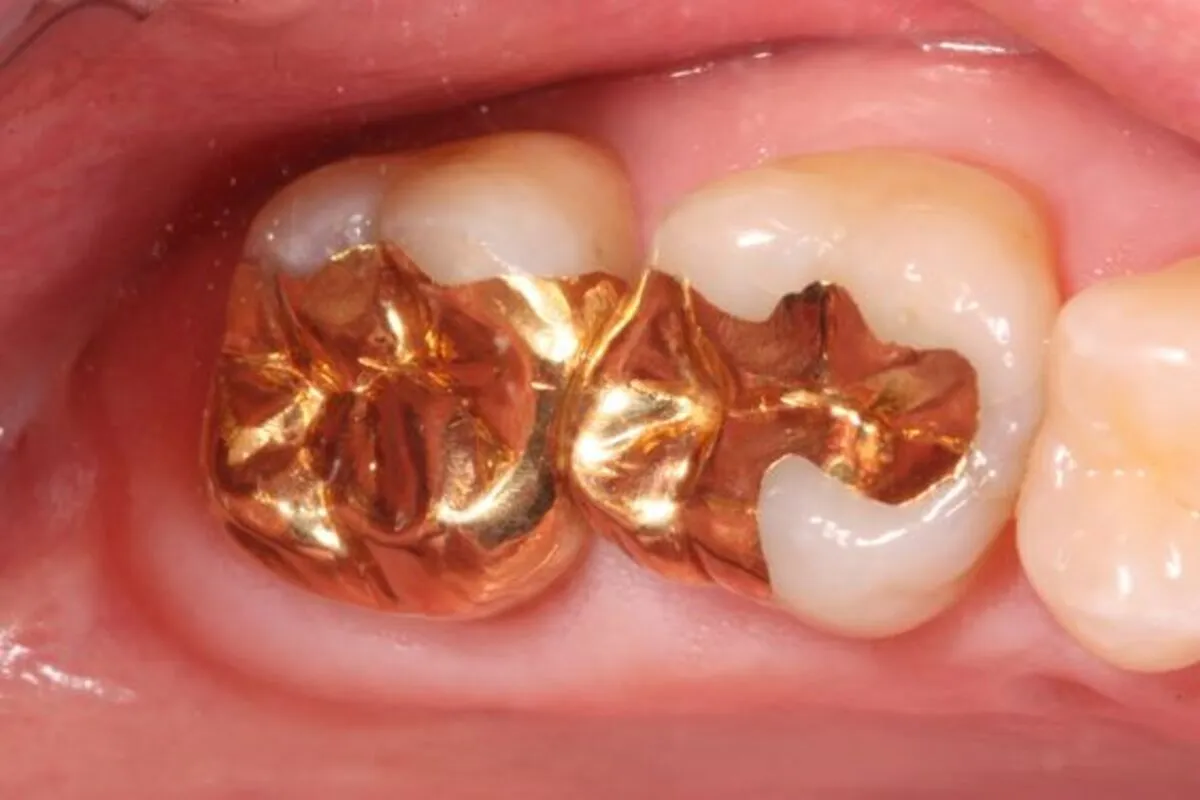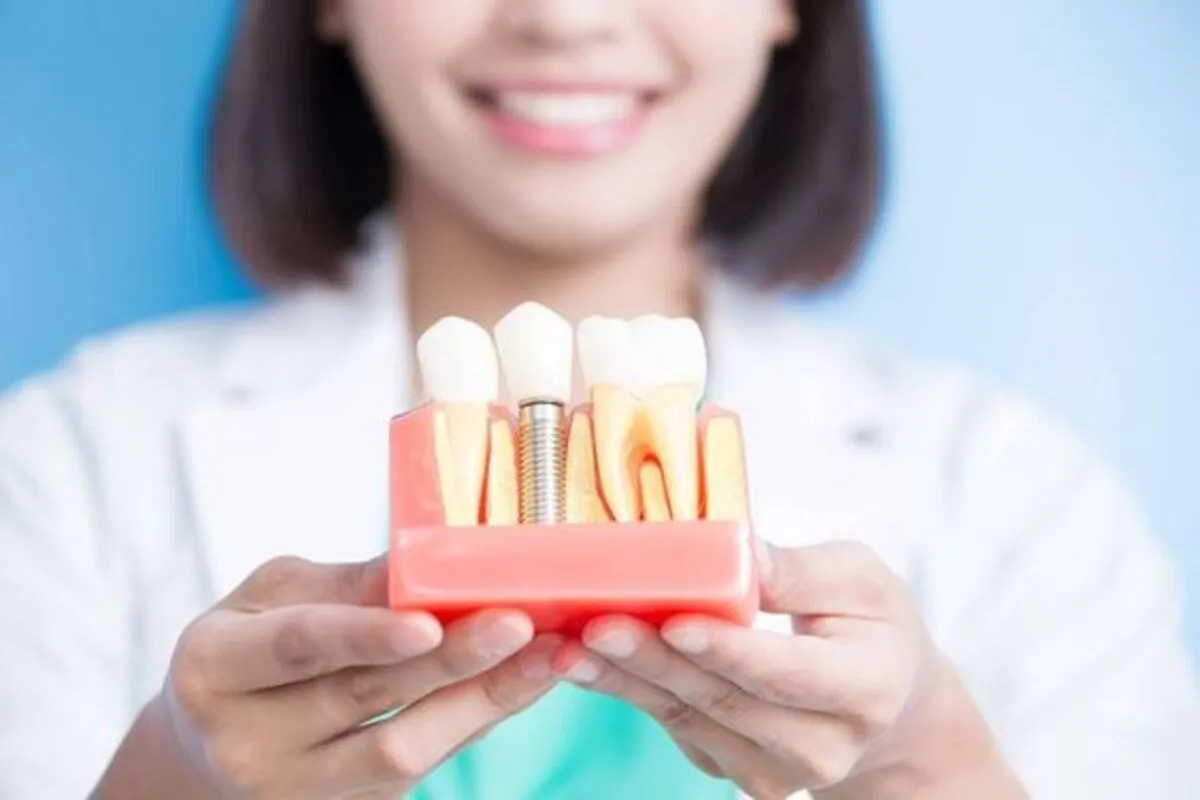Dental inlays offer a middle ground between fillings and crowns for restoring teeth damaged by decay or injury.
Introduction to Dental Inlays
They’re essentially pre-molded fillings, typically made from porcelain or composite resin, which are fitted into the grooves of a tooth and are more durable than regular fillings. Unlike traditional fillings, which can last from five to 15 years, inlays are known for their longevity, often lasting as long as 30 years with proper care.
Types of Materials Used in Dental Inlays
The choice of material for dental inlays includes gold, porcelain, and composite resin. Each material has its advantages, with gold being highly durable and porcelain offering a color match to natural teeth for aesthetic purposes. Composite resin is noted for being cost-effective and also matches the tooth’s color, similar to traditional fillings.
Read it: Dental Implant Materials
The Procedure of Getting a Dental Inlay
The process for obtaining a dental inlay generally requires two visits. During the first, the dentist removes decay and takes an impression of the tooth, placing a temporary filling. The inlay, crafted in a dental lab, is then cemented into place during a second visit. This process restores the tooth’s functionality and appearance without affecting the bite.
Benefits and Considerations
Inlays are beneficial for their durability, strength, and aesthetic appeal, providing a seamless blend with the natural tooth structure. They offer a precise fit, minimizing the risk of leakage and further decay. Moreover, inlays are more conservative than crowns, preserving more of the natural tooth structure, which is crucial for long-term dental health. However, it’s important to maintain excellent oral hygiene and regular dental visits to ensure the longevity of the inlay.
In summary, dental inlays present a reliable and durable option for tooth restoration, blending aesthetics with functionality. The choice of material and the detailed process ensure that inlays not only restore the damaged tooth but also contribute to a healthier and more natural-looking smile.
Types of Materials Used in Dental Inlays
When choosing a material for dental inlays, patients and dentists consider several factors including durability, aesthetics, cost, and how the material reacts to the rest of the mouth. The three primary materials used in dental inlays are gold, porcelain, and composite resin, each offering unique benefits.
Read it: FULL MOUTH RECONSTRUCTION
Gold Inlays
Gold is a classic choice for dental inlays due to its exceptional durability and strength. It’s highly resistant to corrosion and wear, making it an excellent option for the back teeth where chewing force is greatest. Gold inlays can last for decades with proper care, but they are more noticeable than other materials and tend to be the most expensive option.
Porcelain Inlays
Porcelain inlays are popular for their ability to mimic the natural appearance of tooth enamel, including its translucency and gloss. They provide excellent aesthetic results, making them ideal for the visible areas of the mouth. Porcelain is also durable but may require more tooth structure to be removed during the preparation compared to composite resin.
Composite Resin Inlays
Composite resin inlays are made from a mixture of plastic and fine glass particles, offering a balance between strength and aesthetics. They can be closely matched to the color of the surrounding teeth, providing a more natural look than gold. Composite resin is also less expensive than porcelain and gold, but it may not last as long and can be more prone to staining over time.
Decision Factors
The choice between gold, porcelain, and composite resin for dental inlays often depends on the location of the tooth, the patient’s budget, aesthetic preferences, and overall dental health. For example, gold might be preferred for its durability in molars, while porcelain could be chosen for its aesthetic qualities in more visible areas. Composite resin offers a more affordable and aesthetically pleasing option for patients who prioritize cost and appearance but are willing to potentially compromise on longevity.
Read it: PREVENTATIVE DENTISTRY
In conclusion, the selection of material for dental inlays is a crucial decision that impacts not only the durability and function of the restoration but also the aesthetic outcome. Dentists play a key role in advising patients on the best material based on individual needs, preferences, and oral health conditions, ensuring that the chosen inlay provides the best possible balance of strength, appearance, and longevity.

The Procedure of Getting a Dental Inlay
The process of getting a dental inlay is meticulously designed to ensure the restoration is both functional and aesthetically pleasing. Understanding this procedure can help patients know what to expect and how to prepare for treatment.
Initial Consultation and Examination
The first step involves a thorough examination of the affected tooth or teeth to determine the extent of decay or damage. During this visit, the dentist discusses the most appropriate restoration method with the patient, considering factors like the tooth’s location and the patient’s oral health, aesthetic preferences, and budget.
Tooth Preparation
Once an inlay is deemed the suitable treatment, the dentist prepares the tooth. This step involves removing decayed or damaged tooth material and shaping the tooth to ensure a proper fit for the inlay. A local anesthetic is typically administered to ensure the patient’s comfort during this procedure.
Taking Impressions
After the tooth is prepared, an impression of the tooth is taken, which is then sent to a dental lab where the custom inlay is crafted. The material for the inlay (gold, porcelain, or composite resin) is chosen based on the tooth’s location, the desired aesthetic outcome, and other factors discussed earlier.
Temporary Inlay
In most cases, a temporary inlay or filling is placed to protect the tooth while the permanent inlay is being made. This temporary covering helps prevent sensitivity and further damage.
Fitting the Permanent Inlay
Once the dental lab has fabricated the inlay, the patient returns for a second appointment. The temporary inlay is removed, and the dentist checks the fit of the permanent inlay, making any necessary adjustments. The inlay is then cemented into place using a strong bonding agent, and any final adjustments to the patient’s bite are made.
Aftercare and Maintenance
Patients are advised on how to care for their new inlay, including proper brushing and flossing techniques and potential dietary recommendations to avoid dislodging the new restoration. Regular dental check-ups are crucial to monitor the inlay and overall oral health.
Conclusion
The procedure for getting a dental inlay is a multi-step process that involves careful planning and execution to ensure the longevity and effectiveness of the restoration. With advancements in dental technology and materials, inlays continue to be a reliable and aesthetically pleasing option for restoring teeth affected by decay or damage, enhancing both the function and appearance of the patient’s smile. Proper aftercare and maintenance are key to ensuring the durability of the inlay and sustaining oral health.
Benefits and Considerations of Dental Inlays
Dental inlays offer a unique blend of aesthetic appeal and functionality, making them a preferred choice for restoring teeth that have suffered from decay or damage. However, like any dental treatment, they come with their own set of benefits and considerations that patients should be aware of.

Benefits of Dental Inlays
Durability and Longevity: Dental inlays are known for their durability. They can last up to 30 years with proper care, far exceeding the lifespan of traditional fillings.
Aesthetic Appeal: Especially when made from porcelain or composite resin, inlays can be closely matched to the natural color of the tooth, offering a more aesthetic restoration than metal fillings.
Preservation of Tooth Structure: Inlays require less removal of the tooth structure compared to crowns, allowing for a more conservative treatment approach. This preservation is essential for maintaining the tooth’s integrity over time.
Improved Oral Health: By fitting snugly into the prepared space, inlays help to seal the tooth off from bacteria, reducing the risk of further decay. They also do not expand or contract in the same way that metal fillings can, which minimizes the risk of cracks developing in the tooth.
Custom Fit: Each inlay is custom-made to fit the specific contours of the tooth, ensuring a precise fit that restores the tooth’s natural shape and maximizes bite efficiency.
Considerations
Cost: One of the main considerations for dental inlays is the cost. They can be more expensive than traditional fillings due to the materials used and the laboratory work required. However, the investment can be justified by their longevity and aesthetic benefits.
Multiple Appointments: The process of getting an inlay usually requires at least two dental visits – one to prepare the tooth and take the impression, and another to fit the inlay. This may be a consideration for patients looking for quicker treatment options.
Care and Maintenance: While inlays are durable, they require proper oral hygiene practices to maintain their condition and prevent further dental issues. Regular check-ups and cleanings are crucial for assessing the health of the inlay and the surrounding tooth structure.
Conclusion
Dental inlays are a valuable option for tooth restoration, offering a balance between cosmetic appeal and functional durability. They are particularly suitable for patients looking for a long-term solution to dental decay or damage that conserves as much of the natural tooth as possible. Understanding the benefits and considerations associated with dental inlays can help patients make informed decisions about their oral health treatments, ensuring satisfaction with the outcomes of their dental care.

